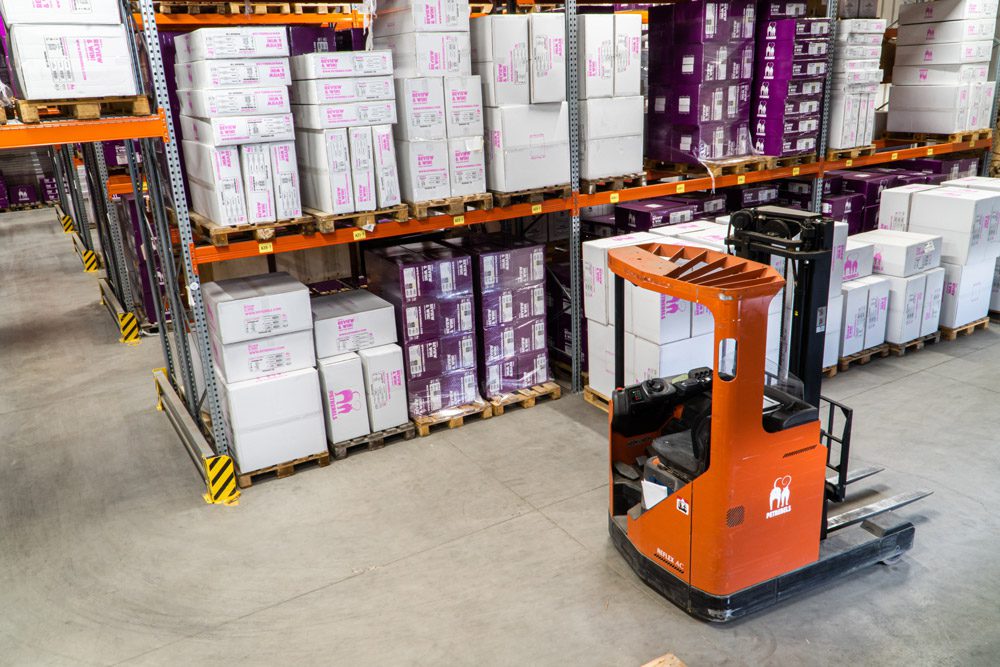Inventory forecasting is a crucial element of any prosperous distributor of goods or wholesale items. The last thing that a business owner wants is for the demand for their product to not be available or delayed due to inventory complications. Implementing a reliable inventory forecasting model lets businesses attain consumer consistency as well as support long-term business growth. Some of the top eCommerce services will even hire a third-party logistic (3PL) service such as ShipCalm to prevent unnecessary delivery complications and keep a cohesive replenishment plan in place.
Effective inventory management can be overwhelming without a firm grasp of market demand and proper product anticipation. Luckily, with the assistance of inventory forecasting methods, managing inventory becomes much more easily controlled. We’ll continue to explore the importance of inventory forecasting and the role it plays within successful business practices as well as:
What is Inventory Forecasting?
In order to actually grow your business and support consumer engagement It’s important to properly forecast inventory demand. Regardless of what products are being offered, there should always be a safety net in place to adequately anticipate any sudden market fluctuations. Inventory forecasting will look different for each business so there are numerous inventory forecasting methods that can suit a company’s needs best. Some of the benefits of learning how to forecast your inventory include:
1. Carrying the Proper Amount of Inventory
Many of the most implemented inventory forecasting models focus on having an appropriate amount of inventory at any given time, no matter what happens within the market. This includes preventing a lack or excess of inventory, as you don’t want to run out of product but also want to prevent having product sit become dated on shelves. Not only does proper inventory forecasting keep product production easier to control, it makes sure capital isn’t unnecessarily wasted.
2. Understanding Cash Flow & Finances
Being able to establish an accurate snapshot of a business’s profits provides capital transparency and allows the company further expansion and growth. Inventory management is the spine that supports profit and market growth. Without a true idea of how much your business is able to spend, it’s easy to fall behind and lose potential profits.
3. Streamlining Logistics
Every business should seek to have a well-managed production cycle to properly anticipate market needs and prosper long term. Inventory forecasting allows a business ease of mind, with a prevention plan for backorders or shipping complications within consumer demand. This is why many businesses will even hire a third-party logistics service to ensure inventory is stocked according to current market trends.
4. Reducing Labor Costs
Warehouse management, staffing, and business representatives are all labor costs that can add up fairly quickly. If there is a lack of product or an excess in inventory, more employees are required in order to properly meet consumer demand and track what needs to be ordered to properly replenish products. Not only are inventory management models beneficial for saving profits, they prevent any waste in labor costs.
5. Increasing Customer Satisfaction
Customer satisfaction is the biggest element of growing a business and building credibility as a company. No one enjoys finding a product they love only to learn that it’s sold out and won’t be available for a while. Poorly managed inventory negatively affects sales and makes overall turnaround time less cohesive. These are all situations you want to avoid to keep customers happy with business services.
Inventory Forecasting Models
Due to the many advantages of establishing a streamlined inventory management system, there are various forecasting models that companies will fall back on to determine the trajectory of their production efforts. Some of the most commonly seen inventory forecasting models that support business prosperity include:
Qualitative Forecasting
Qualitative inventory forecasting relies on business intel and historical context and data in order to properly stock inventory levels. Businesses with an active production line will have the ability to base inventory decisions on past events and company experiences. This model is typically less precise due to the focus on less measurable inventory factors such as consumer demand and market interest. Using years of historical data and company experiences to carefully spot potential fluctuations is effective but can be subjective to recent market trends and occasions.
Quantitative Forecasting
Quantitative inventory forecasting is a mathematically-based model that also looks at past sale patterns to properly manage inventory. The machine learning techniques and analytical models available determine how successful a quantitative model will be, which depends on the amount of data available and the period of time being analyzed. ShipCalm offers extensive inventory forecasting, with a time series forecast Arima model that helps businesses look at historical information and create a simple data warehouse to support rapid growth. Being able to accurately predict future product value is paramount to properly serving the consumer. Ship Calm uses this quantitative forecasting within this model to forecast inventory correctly while also keeping unexpected market demands and seasonal popularity in mind.
Inventory Replenishment Models
We’ve covered the different ways a business may choose to evaluate their inventory data, whether it be through a quantitative or a qualitative forecasting system. The way inventory is replenished is typically much more unique to each business’s unique demands and consumer interest. Generally speaking, businesses will either choose to base inventory efforts based on quantity levels, time periods, or a combination of both.
Replenishment By Quantity
Amazing for businesses that deal with a large number of product demand, being able to quantify inventory levels is a crucial element of staying stocked and able to satisfy consumers. Within a quantity replenishment system, an alarm is raised from the moment inventory drops below a certain level. This level is a fixed quantity, with new orders made immediately to quickly replenish the inventory. This prevents backorders and shipment delays, as there is always a safety net of inventory beneath the reorder point within the quantity inventory forecasting model.
Replenishment By Time Period
Another replenishment method that is common is the fixed period reordering system. Inventory replenishment is triggered after a fixed period of time in this replenishment model. Whatever the inventory levels are at when the order period occurs will be automatically replenished to the business’s preferred level. This continual process allows inventory to be managed consistently while also giving time for inventory to be cycled out efficiently and prevent wasted product.
Let ShipCalm Help with Inventory Management!
Effectively managed inventory is the backbone to business growth and profitable services. Not only does inventory forecasting keep consumers happy and workflow streamlined, it helps save money and optimize capital to gain control of distributing systems. Businesses that prefer to focus on direct consumer services can strongly benefit from the help of a third-party logistics service such as ShipCalm to handle inventory management. Hire the workforce needed to properly manage your business’ inventory and build a profitable infrastructure with Ship Calm’s dedicated resources proven to support business growth. Get a custom price from Ship Calm today!

